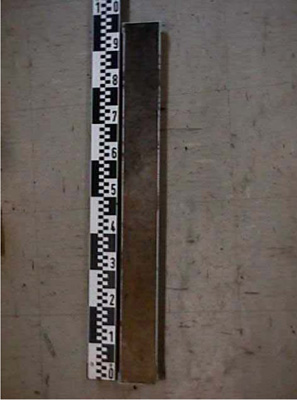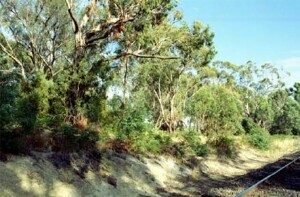BD9
|
| BD9 |  Parapanic, Sesquic, Aeric Podosol | |
| Lal Lal | |||
| Gently undulating ridge | |||
| Aeolian material over Ordovician sediments | |||
| Lunette | |||
| 1–3 % | |||
Horizon | Depth (cm) | Description | ||
A1 | 0–16 | Greyish brown (10YR5/2); loamy sand; apedal massive structure; water repellent; pH 7.0; gradual boundary to: | ||
A2 | 16–51 | Pale brown (10YR6/3); sand; apedal massive structure; pH 5.0; sharp boundary to: | ||
B2 | 51–100+ | Yellowish brown (10YR5/6); clay sand; apedal massive structure; pH 5.5. | ||
| Management considerations | ||||
The soil is suitable for limited cropping with cereals, peas and summer fodder crops, but it is most suitable for growing lucerne or pastures. Potatoes can be grown but usually do not yield well without good summer rain, or supplementary irrigation. Like granitic soil, this aeolian sandy loam supports good autumn and winter growth, but dries out quickly at the end of spring. Consequently, spring growth stops early and summer fodder crops produce well only with good summer rain or irrigation. | ||||



